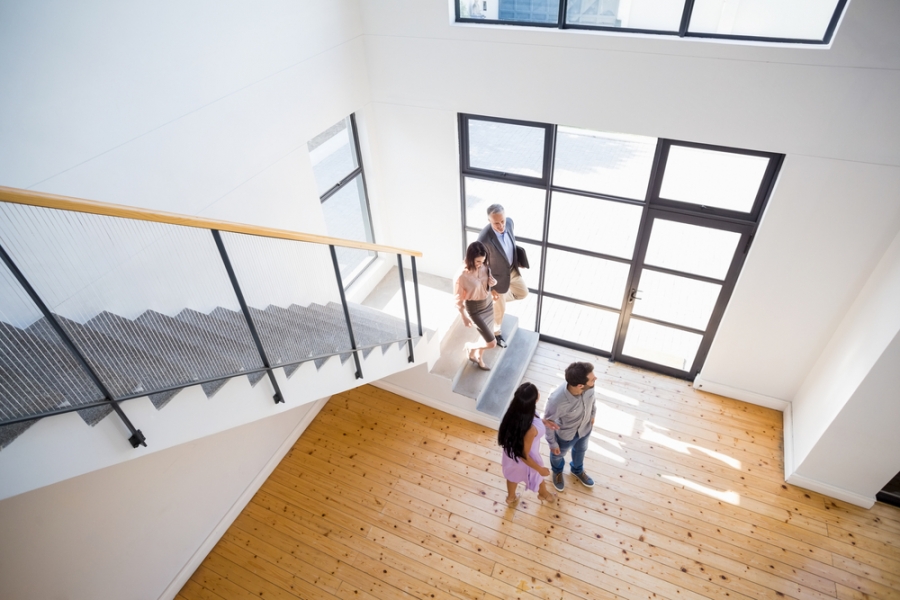Understanding real estate is often a matter of understanding people; and how people’s behaviors are influenced by their backgrounds and life situations. The aging baby boomers of our society are living longer than their parents did, changing the way they view retirement — and their homes. At the same time, millennials are having their own unique effect on the modern real estate market.
Our nation’s demographic patterns — including age, race, gender, income, and more — are often reflected in business and real estate, and can be a very significant driver for current and future trends. The types of property sold, property available, and pricing are all subject to changes in market demographics.
Let’s explore the effect of our current demographics on today’s market and real estate trends.
The Millennial Factor
Debt
Baby boomers were once the largest generation by number in the nation, until millennials came along. Although millennials and baby boomers are beginning to share the real estate pot, and compete for housing, many millennials still find themselves living at home — with high debt and low buying power — while the number of retirees continues to grow. Our national population is aging, and the number of retirees in nursing homes is also reaching new record highs. This leaves many houses open to be rented out to a new, less cash-flush generation. The demographics of homebuyers are already reflecting the shift in wealth vs. debt that has overtaken the millennial generation.
Family
As millennials become the lion’s share of the US demographic profile, the shift in real estate will follow their lifestyle trends. For example, the family unit has changed drastically over the last few generations — leading to fewer marriages and cohabitations, and a greater number of 18 to 34-year-olds living with their parents than ever before. According to the National Association of REALTORS®, some experts say this has understandably caused a reduction in home sales; with the “kids” still living at home, fewer parents can downsize and open their houses to the market. These new behavior patterns will likely influence the face of the real estate market for generations to come.
First-time Home Buying
According to research conducted by the National Association of REALTORS®, the percentage of first-time homebuyers is the lowest it has been in decades — while the median age and income of the average buyer has increased. Millennials are facing a slew of challenges to their home owning goals. Difficulties obtaining loans and credit, higher housing prices, and lower average salaries are keeping many of these buyers on the sidelines. Although millennials represent 60% of first-time homebuyers, many of them have put off homebuying, as they look towards better future economic opportunities. In turn, the number of millennial apartment dwellers continues to rise.
The Baby Boomer Bottleneck
Retirees today have more “golden years” ahead of them than any of their preceding generations. With longer lifespans, those coming out of the workforce are looking to fix up their homes, pursue their hobbies, and live life to the fullest. This requires funding — which is quickly waning as pensions are phased out, and inflation chips away at the value of their long-held savings accounts. While we still see a sizable number of baby boomers joining the next wave of housing purchases (as they look to downsize), many are alternatively staying put — extending their working years, to gather a bit more income.
As they make a slower transition from a traditional job into retirement, they’ve created what many consider a “baby boomer bottleneck.” Part-time employment, work-from-home opportunities, and other activities are keeping this generation engaged in their homes — often reinventing their living spaces to include home offices, media rooms, more accessible bathrooms, and a shift to home features that are easier to maintain.
As baby boomers hang onto their houses longer than previous generations, they’re lowering the number of home sales; creating rising prices, and a general slowdown of new homes on the market. That’s not to say that millennials aren’t contributing to the issue, as well. As family units persist living together long after children have completed their college education, the practicality of downsizing loses its allure. And, as most houses these days are owned by individuals 55 and older, we see a significant impact on the amount of available real estate on the market.
The Housing Bubble
It’s not just baby boomers and millennials who have significantly changed the tides of real estate. The rising home prices of the mid-2000 housing boom prompted many lenders to offer high-risk mortgages, at low interest rates, to homebuyers with poor credit — not a reliable combination. Soon after, the real estate bubble burst, real estate prices plummeted, and interest rates spiked. This left many homeowners unable to sell their homes for a profit, or get out from under their mortgages. They were, essentially, stuck in their homes.
Many of those affected have recouped their equity, according to Capital Gazette, but some are still struggling to regain their footing. These owners are forced to postpone their plans to sell, while their equity rebuilds into a profitable investment. The slowdown in home sales and reduction in available houses on the market have pushed housing prices higher and higher. Even downsizing is becoming a challenge, as even small homes are popping up with loftier price tags.
The Bottleneck Won’t Last Forever
As demographics in the nation fluctuate, the empty nest syndrome that used to drive baby boomers to sell (either to downsize, or move into rental properties) has waned, causing a bottleneck in available homes on the market. This hasn’t stopped the housing market from capitalizing on those who can, and are, buying currently.
Real estate often makes up a large chunk of an individual’s personal wealth — those boomers who can afford large houses, but are looking to downsize can find a great many number of higher priced, alluring options in enticing neighborhoods. Although millennials are finding it challenging to enter the housing market today, the steady economic upturn since the recession, noted by a Deloitte study, is likely to provide them with a golden ticket to home ownership in the near future.








